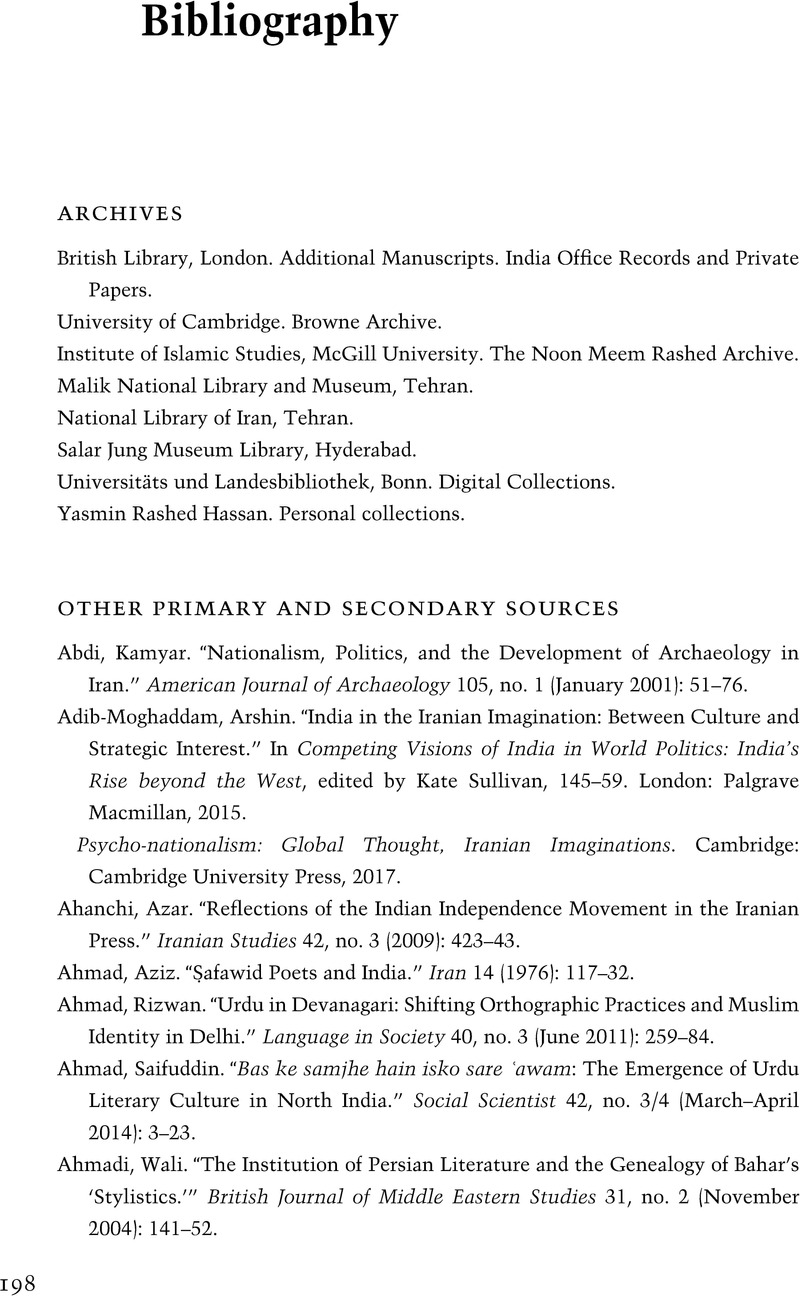Book contents
- The Making of Persianate Modernity
- The Global Middle East
- The Making of Persianate Modernity
- Copyright page
- Dedication
- Contents
- Figures
- Acknowledgments
- Note on Transliteration and Dates
- Key Figures and Texts
- Introduction
- Connections
- 1 Histories
- 2 Erotics
- 3 Origin Myths
- 4 Print
- Conclusion
- Bibliography
- Index
- References
Bibliography
Published online by Cambridge University Press: 23 March 2023
- The Making of Persianate Modernity
- The Global Middle East
- The Making of Persianate Modernity
- Copyright page
- Dedication
- Contents
- Figures
- Acknowledgments
- Note on Transliteration and Dates
- Key Figures and Texts
- Introduction
- Connections
- 1 Histories
- 2 Erotics
- 3 Origin Myths
- 4 Print
- Conclusion
- Bibliography
- Index
- References
Summary

- Type
- Chapter
- Information
- The Making of Persianate ModernityLanguage and Literary History between Iran and India, pp. 198 - 231Publisher: Cambridge University PressPrint publication year: 2023

